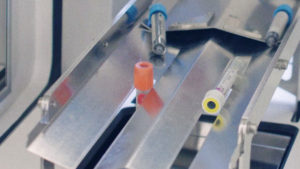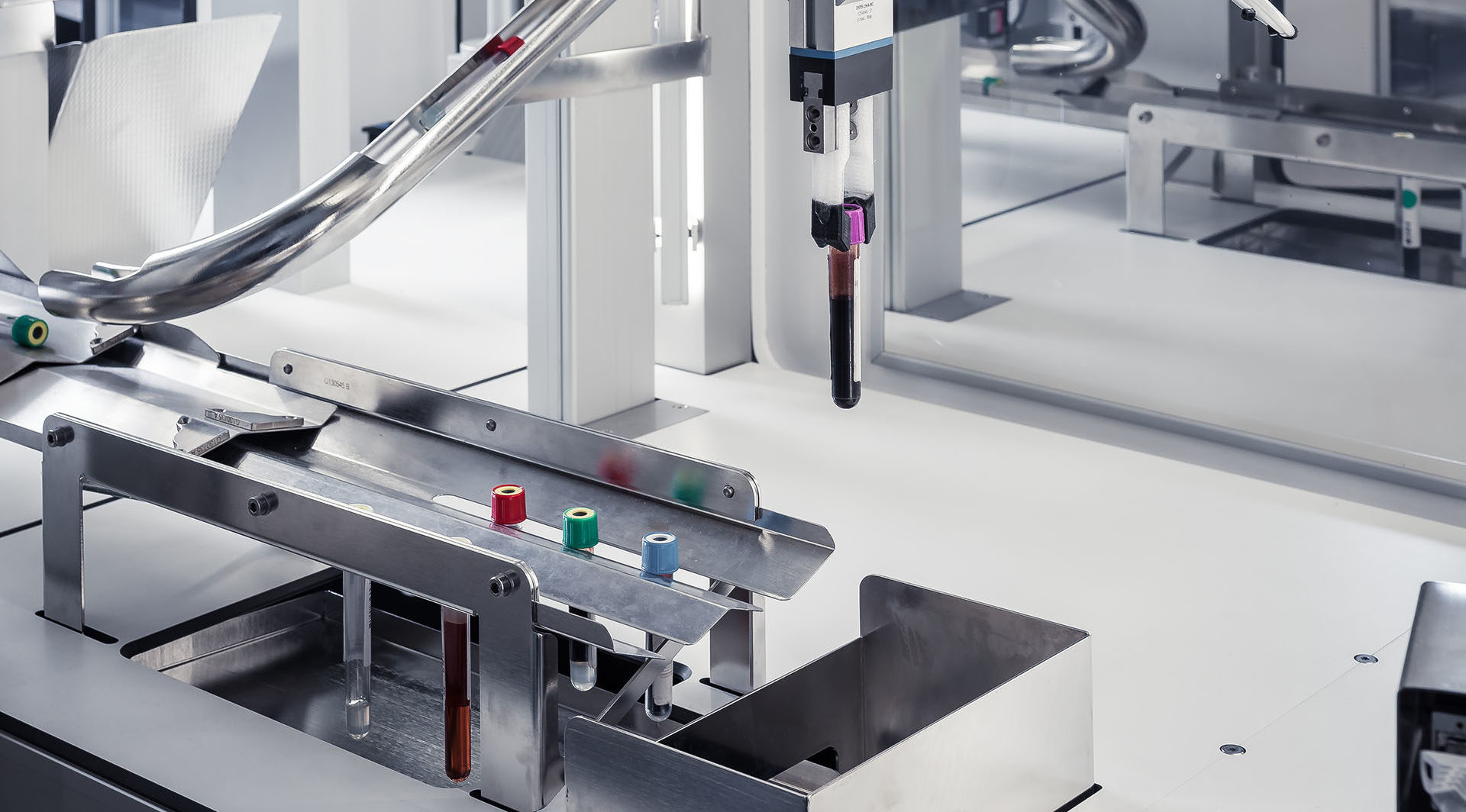Most of us have taken a blood test at a hospital visit. Did you know that each vial can be used for more than 30 different tests and a majority of these tests are made by advanced automated machines that give very accurate results in the matter of minutes? As an example, our customer Lund Hospital are processing around 4,9 million tests each year in their lab both from the hospital and from surrounding medical centres.
Heavy Manual Work in Hospital Labs
Considering the level of automation and vast number of tests done in a hospital lab it is alarming that all vials are still sorted, checked and moved around manually when arriving to the lab. The flow of samples comes in small batches through the internal tube system or via boxes and racks. The lab personnel therefore constantly get interrupted taking care of the incoming samples; checking, sorting and placing them in test machines. This takes a huge amount of time, adds stress and could not be considered value adding for highly skilled staff. Also, the incoming boxes with vials are often heavy and moving them around, even for short distances, is not at all ergonomically acceptable.
Improved patient security thru first-in-first-out
Manual handling of samples comes with the risk of malpractice and human errors. In combination with long hours and high stress this risk increases even further. An automated solution can assure that the samples are sorted correctly but also assure that the first incoming sample is the first sample that gets tested. With manual or bulk handling, a test could be laying around for a long time without being processed and risks being spoiled or worse.

Shortage of Lab personnel
Even before Covid-19, the world had a shortage of 6 million nurses and the situation for lab personnel is even worse. In the Nordics the situation leads to massive overtime and sick leave due to long hours and stress, both physically and mentally. We all need to make sure that we can save as much time and effort in their work as possible. Automation is being implemented in the Nordic countries but still far away from reality in other regions. As the need continue to grow we have to make sure the automated solutions are available for less developed countries as well.

Handling incoming external samples
Many hospitals and regions all over the world are centralizing lab-testing to bigger and more automated labs and hospitals. Done right this means that more people get access to a bigger variety of tests and shorter response times. However, this trend puts a big pressure on both facilities and people and many of the biggest challenges are not yet solved.
We at Graniten are working with several hospitals in solving the challenge to handle incoming external samples. As described this process is both heavy, time consuming and with risk of malpractice. We need to find new solutions that are flexible enough to fit the different needs (and spaces) at different hospitals – taking care of the whole process with incoming boxes; opening, sorting, storing, transporting and inserting the vials in the lab machines for testing – fully getting rid of repetitive, heavy work and give the personnel time to work with what machines cannot do.

Shorter response time for patient specific tests
It’s a fact that we have an increasing elderly population. Combine this fact with the lack of resources in healthcare and the challenge to provide better care for patients seems almost impossible. But with smart automation in hospitals, we can shorten the response time for tests and free up time for the personnel – therefore giving the patient a faster, better and more accurate treatment. Automated solutions are not going to solve all issues in healthcare, not even in the Labs but it is for sure a tangible thing we can do right now.


